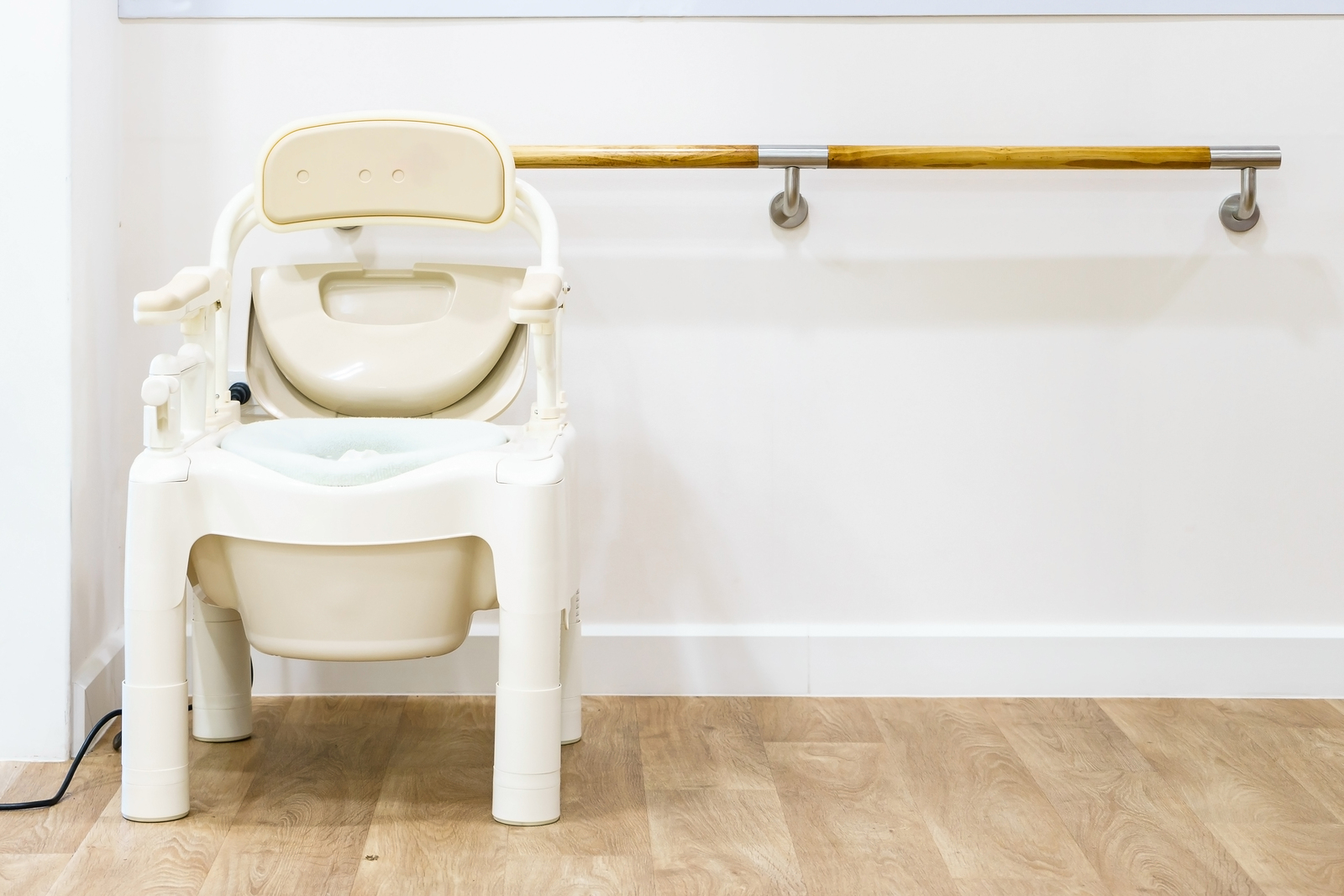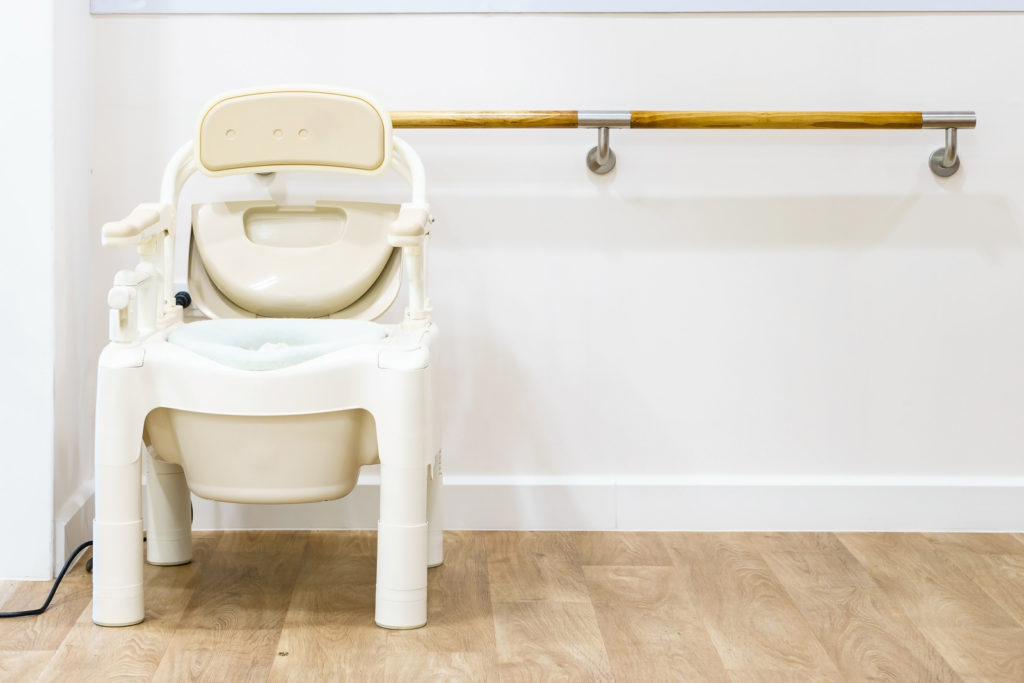The History of the Commodes and Their Development
Thursday, August 29th, 2019, 6:40 pm , Posted by MED +
The commode, or as we more commonly refer to it, the toilet, is something everyone uses on a daily basis. It is the centerpiece of most modern bathrooms and iterations of the modern toilet date back over 5000 years. Over the years it has evolved from a hole in the ground to the modern and advanced models seen today. Even the meaning of the word commode has evolved over the years.
In this blog, we will take a look at the history of the word and the fixture that we have come to refer to as the commode.

The History of The Word
The words original meaning refers to a chest of drawers. Over time, the meaning changed with the invention of the toilet.
Abe Abbas on the spruce explains:
“In early 18th-century France, the word commode meant a chest of drawers or a cabinet for storing personal items. The word derives from the French word for “convenient” or “suitable.”
Later on, “commode” was used to mean a particular type of cabinet that held chamber pots. And gradually it evolved to refer to a piece of wooden chair-like furniture that held the chamber pot. In the final stage of the word’s semantic drift, the term was used to refer to the porcelain plumbing fixture that replaced the chamber pot altogether—the toilet. This usage of the term still exists today.”
The History of the Commode
Smithsonian.com provides a quick and effective summary of the history of the commode and their development over the years:
“The flush toilet was invented in 1596 but didn’t become widespread until 1851. Before that, the “toilet” was a motley collection of communal outhouses, chamber pots and holes in the ground. During the 11th-century castle-building boom, chamber pots were supplemented with toilets that were, for the first time, actually integrated into the architecture. These early bathrooms, known as “garderobes” were little more than continuous niches that ran vertically down to the ground, but they soon evolved into small rooms that protruded from castle walls as distinct bottomless bays.”
The Historical Timeline Of The Commode
The commode has undertaken significant changes over the years. localhistories.org provides a historical timeline of the history of the commode:
Ancient Times
- 2,300 BC: Stone huts in Scotland have drains with cubicles over top of them.
- 2,000 BC: Towns in Pakistan and India are built with sewer networks. Toilets are flushed with water.
- 1,200 BC: The wealthy use containers with sand.
- 100 AD: Sewers collect rain water in Rome. Public lavatories are built.
Medieval Times
- 12th Century: Monks create stone chutes that exit into the sea. The tide flushes away sewage.
- 1200: Toilets in castles use a vertical shaft cut into the walls. A stone seat is on top.
- 14-15th centuries: Towns in Europe introduce public toilets.
- 1500: People use plant leaves as toilet paper.
1596
This is one of the most significant years in the history of the commode. Sir John Harrington invented the flush toilet. Due to many societal factors at the time it took until the industrial revolution and improvements in manufacturing for the idea to catch on.
Nate Barksdale on History.com explains how his toilet works:
“Harington’s device called for a 2-foot-deep oval bowl waterproofed with pitch, resin and wax and fed by water from an upstairs cistern. Flushing Harington’s pot required 7.5 gallons of water—a veritable torrent in the era before indoor plumbing. Harington noted that when water was scarce, up to 20 people could use his commode between flushes.”

1775
Building on the original concept by Harrington, Alexander Cumming patents a flushing lavatory. This is the point in time when the modern toilet we use today began to become a reality. Barksdale explains the significance of Cumming’s work:
“His greatest innovation was the S-shaped pipe below the bowl that used water to create a seal preventing sewer gas from entering through the toilet. In the late-19th century, a London plumbing impresario named Thomas Crapper manufactured one of the first widely successful lines of flush toilets. Crapper did not invent the toilet, but he did develop the ballcock, an improved tank-filling mechanism still used in toilets today.”
Modern Times
- 1852: The first modern public washroom is introduced.
- 1857: Toilet paper goes on sale in the USA. It is sold in sheets. Toilet paper is not sold by the roll until 1890.
- 1884: The first pedestal toilet pan is created.
- 1900: Some homes are built with door bathrooms with toilets.
Explore Commode Solutions For Your Home
At Med+, we offer a variety of commode solutions for your home. Whether you are looking for something stationary, wheeled, or even a shower commode, we have you covered. Check out our selection of commode products:
Stationary commodes
Wheeled commodes
Shower commodes
Read More From Our Blog
The History of the Hospital Beds and Their Development
The History of the Stairlift and Its Development





